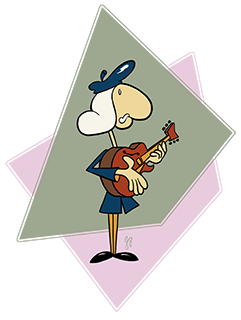| arpeggios.pdf |
I've been practicing these arpeggios with the changes of standards I'm learning. If the first bar is A-7, I'm finding the A-7 arpeggio on some part of the neck and running through it a couple times, then linking together the other places it appears. I try to play the arpeggio different ways, with string skipping, etc. But it is really good just to noodle on it and find some licks you might like. I am constantly trying to do the "Joe Pass" lick: Playing the upper and lower scale tone of the 3rd and 7th and then hitting said target. This helps me visualize where the third and seventh is on these arpeggios.
Once I'm comfortable with the first chord, I move on to the next chord and find that arpeggio. I noodle through all the arpeggios until the form is done. Then when I go back and solo over the song at tempo, I try and find the next chord's root and visualize the arpeggio, just like I would visualize the mode of a scale. If the nearest root of the next chord is on the B string, I need to see that arpeggio on the fretboard, especially where the 3rd and 7th is, without hesitation.
Eventually I will start to see the arpeggios laying over top of the modes of the major and minor scales. But for now, I really need to learn these arpeggios cold. It's less notes than a seven-tone scale, so it should be easy!

 RSS Feed
RSS Feed
